
1. Abstract
While studying about phenomenology and livability, it’s expression and its governing aspects, it is essential to recognise the true meaning of it. Phenomenology is reffered to the lived experience of objects, space and other surroundings. It is also important to understand the how, when and where of the experiences and what experiences are already engraved in our minds. The most important way to perceive the experience of space is to be using all the 5 senses of a human body i.e., eyes(visual experience), ears(audial experience), mouth(spoken experience), nose(olfactory experience) and skin(tactile experience). Quantifying experience is a very extensive method to make the intangible more tangible. One of the ways of understanding experience of spaces in the urban fabric can me seeing other tangible indicators. Indictors like social cohesion, climatic conditions, noise pollution, density of green spaces etc.
2. Hypothesis
Can we quantifying spatial experience in districts of Barcelona with Livability?
3. Objective
This project aims at finding parameters that can define the livability of different districts within the city of Barcelona to make the experience of these districts more tangible. This, in turn creates a base to quantify this experience so that spatial design can be made more effective and can be embedded in the minds of citizens of the city.
4. Scope
The scope of this project is to find credible parameters measuring livability of spaces which can indirectly help in quantifying intangible measure like the spatial experience of these spaces. The parameters chose to carry out the project may or may not be the most credible way of quantifying livability, which could give the project a better perspective into looking for the correct parameters of quantifying spatial experience.
5. Methodology
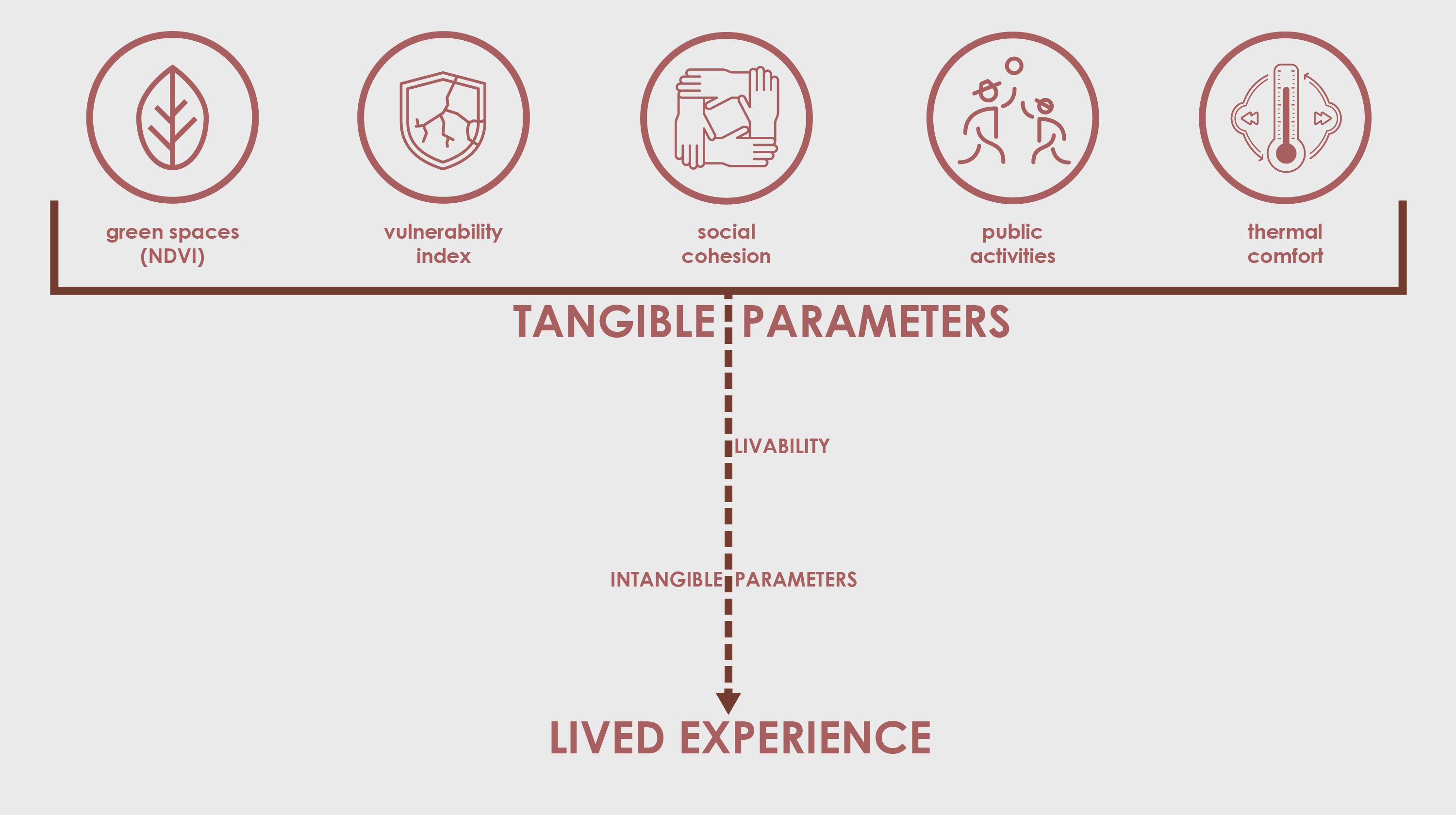
To carry out this project various data sets have been used to find credible correlations between several parameters and livability of space. The methodology followed will be identifying some social, economic and environmental parameters and overlapping it with a detailed livability data to find direct or indirect correlations or no correlation at all.
6. Livability: Quantifying the lived experience
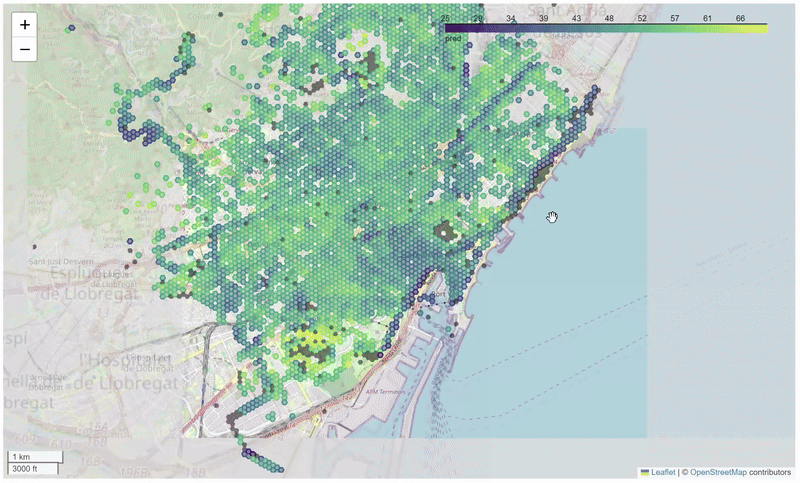
In the pursuit of finding the perfect place to call home, one often come across the term “livability.” But what does it really mean, and why does it matter? Let’s delve into the essence of livability and explore its significance in shaping one’s communities.
At its heart, livability is all about creating environments that promote long-term well-being for individuals and communities alike. It encompasses a wide range of factors, from the availability of districts amenities like parks, open spaces, and grocery shops, to environmental quality, safety, and health. Livability also takes into account more intangible aspects such as cost and friendliness, which all contribute to the overall pleasantness and accessibility of a community.
The concept of livability isn’t new, but its formal study is relatively recent. It traces its roots back to the 1960s when scholars began examining social indicators as part of their research on quality of life. However, it wasn’t until the 1980s that the term “livability” gained prominence, particularly in discussions surrounding urban quality of life.
Today, the study of livability is multifaceted, with researchers approaching it from various angles, each with its own set of goals and scientific methodologies. Depending on the context, livability can be defined in numerous ways, reflecting the diverse needs and priorities of different neighborhoods.
As we navigate through this exploration of livability, it’s essential to recognize its profound impact on the fabric of our communities. By understanding what makes a place truly livable, we can work towards creating environments that foster not only physical well-being but also a sense of belonging and connection.
In the upcoming sections, the idea is to delve deeper into the different dimensions of livability, examining how factors like green spaces, thermal comfort, and social cohesion shape the places we call home.
7. Parameters
In the quest to understand what makes the districts truly livable, diving deeper into the intricate web of urban parameters helps to define the lived experience. From public activity to thermal comfort, each factor plays a crucial role in shaping the overall well-being of a community.
- Public Activity: At the heart of every vibrant district lies a bustling hub of public activity. From parks and recreational spaces to bustling streets lined with shops and cafes, these spaces serve as the lifeblood of community interaction. The presence of vibrant public activity not only fosters a sense of community but also contributes to the overall liveliness and vibrancy of a district.
- Social Cohesion: A sense of belonging and connection is essential for the well-being of any community. Social cohesion, characterized by strong social networks and mutual trust among residents, plays a pivotal role in fostering a supportive and inclusive environment. Districts with high levels of social cohesion often exhibit lower crime rates, greater resilience in times of crisis, and a higher overall quality of life.
- Vulnerability: Understanding and addressing the vulnerabilities within a districts is crucial for ensuring the well-being of its residents. Factors such as access to essential services, exposure to environmental hazards, and socio-economic disparities can significantly impact the vulnerability of a community. By identifying and mitigating these vulnerabilities, we can create more resilient and sustainable districts that prioritize the safety and security of all residents.
- Thermal Comfort: The built environment plays a significant role in shaping our comfort and well-being, particularly in urban areas. Factors such as building design, green spaces, and access to shade can influence thermal comfort levels within a districts. By prioritizing strategies that promote thermal comfort, such as green infrastructure and sustainable building practices, we can create healthier and more livable communities for all.
- NDVI (Normalized Difference Vegetation Index): The presence of green spaces and vegetation within a districts not only enhances its aesthetic appeal but also has a profound impact on overall livability. The NDVI, which measures the density and health of vegetation in an area, provides valuable insights into the environmental quality and ecological sustainability of a districts. By promoting the integration of green spaces into urban planning and design, we can improve air quality, mitigate the urban heat island effect, and enhance the overall livability of our communities.
The following visuals show the plotted interactive maps of the above mentioned parameters that need to be assessed spatially to correlate with the livability of these localised polygons for a more detailed analysis. In the pursuit of quantifying the livability of districts, it’s essential to consider these urban parameters and their intersection with a livability index. By understanding the complex interplay between these factors, one can work towards creating more resilient, inclusive, and vibrant communities that prioritize the well-being of all residents.
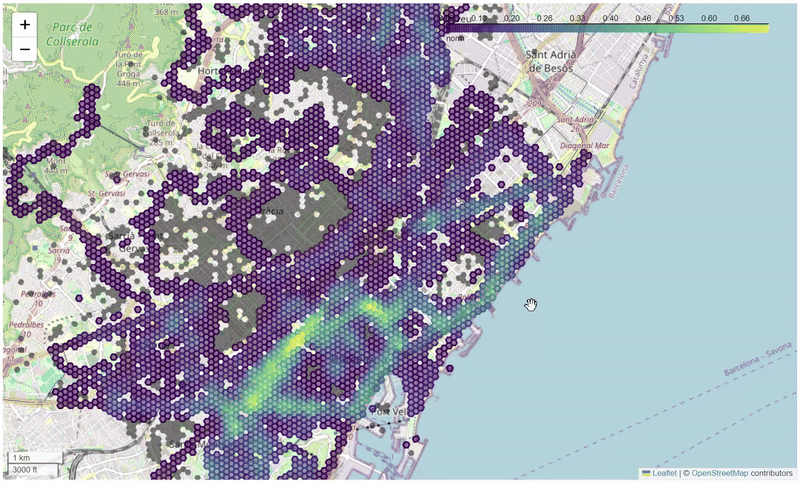
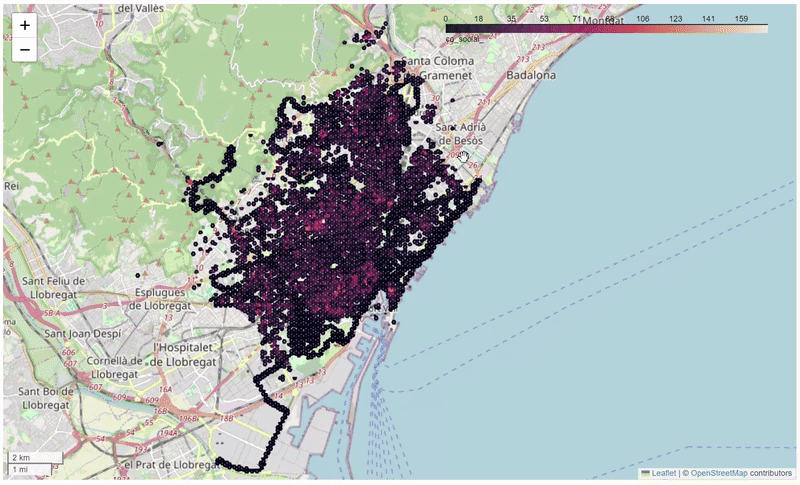
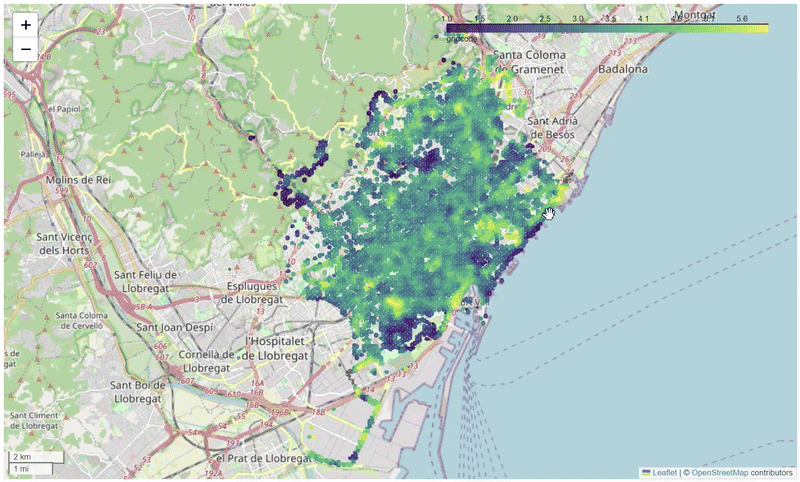
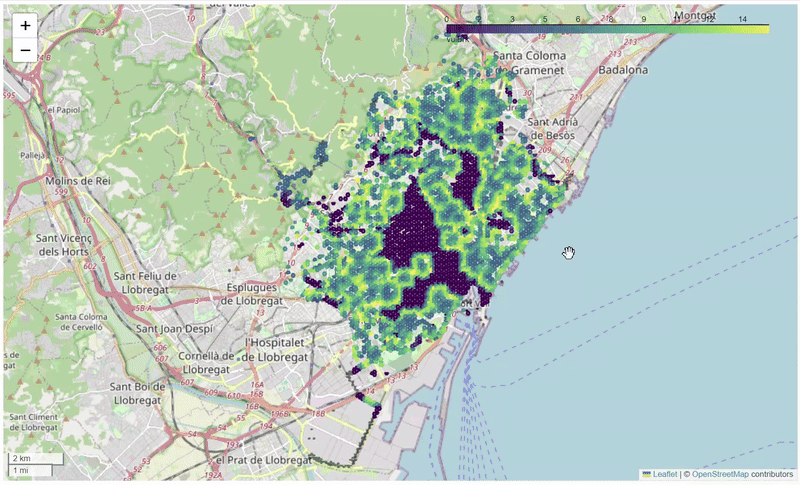
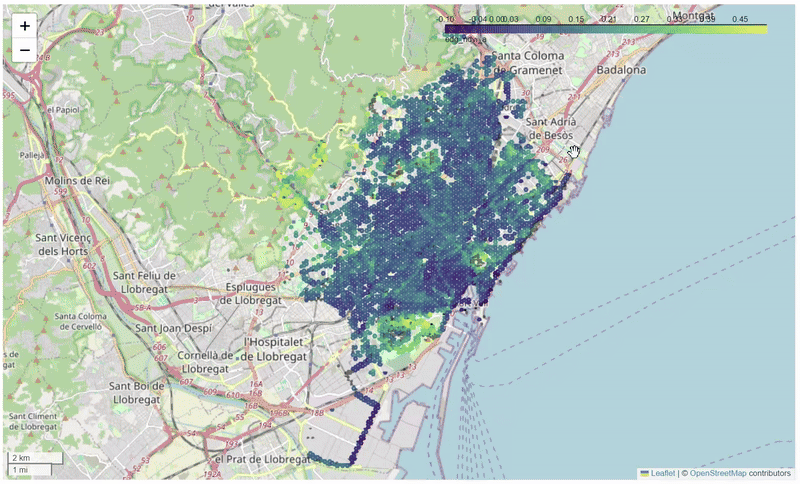
8. Correlations
In order to delve deeper into connecting the tangible parameters of livability to the spatial experience of the districts of Barcelona, the parameters have been overlapped with the livability index as examined in the data source 300000.km/s. On the overlap of these parameters with livability some correlations have been found to be right where as some of them have been wrongly proved.

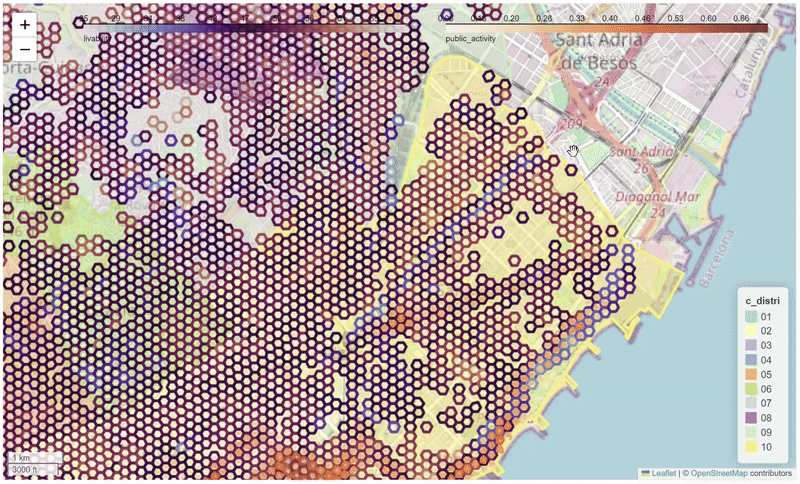
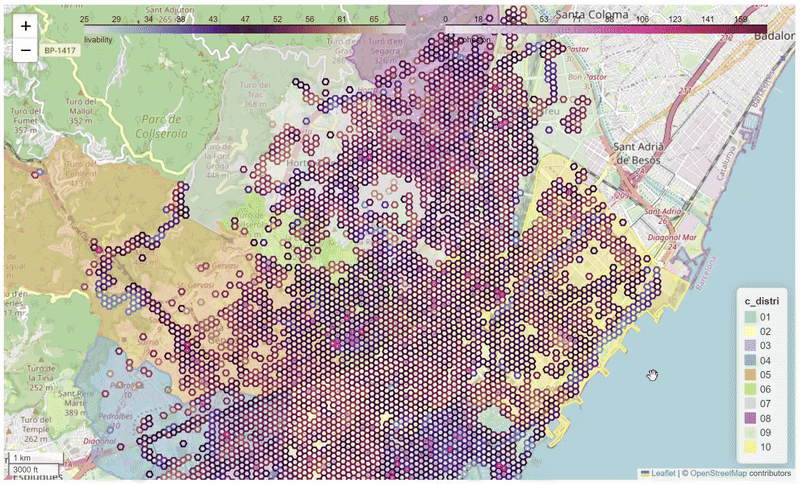
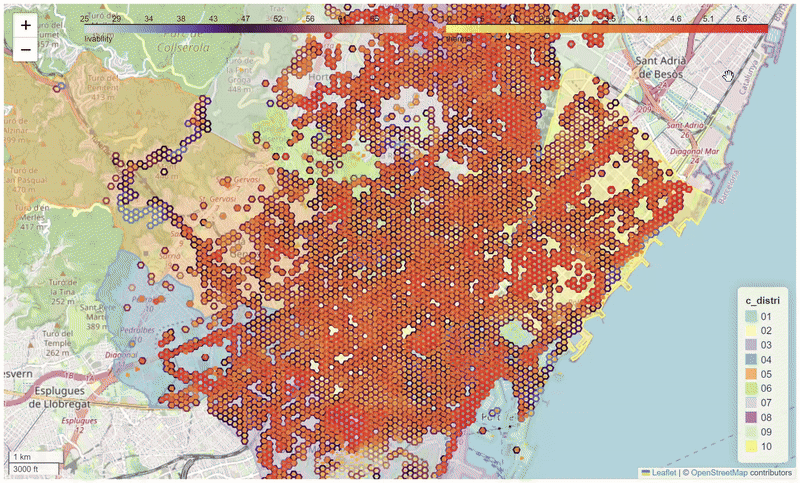
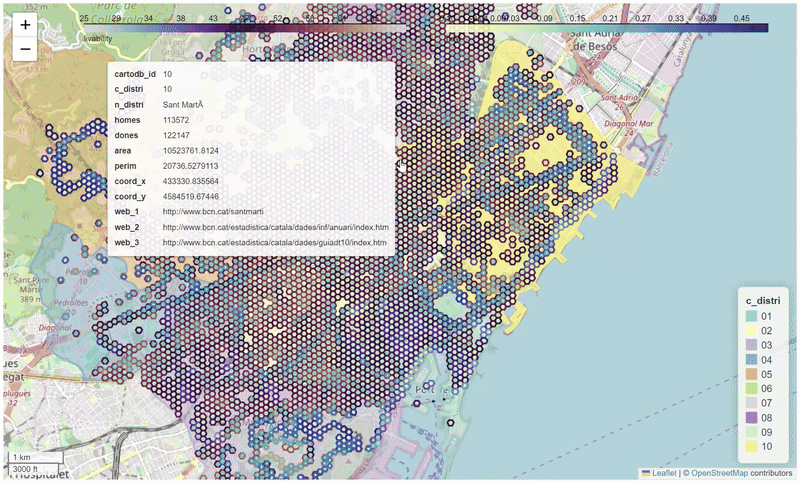
9. Conclusion
In conclusion, social parameters like social cohesion and public activities have been proven to be affected affect the livability index of the hexagons with the districts. However, environmental and economic parameters like vulnerability thermal comfort, NDVI and vulnerability index together have been showing direct correlations with the livability index within the hexagons of the districts of Barcelona. Subsequently this indicates that spaces with high NDVI, high thermal comfort and lower vulnerability index are the places with high livability and these are the spaces where the experience of the the districts gets enhanced.
This however highlights that the parameters for the social aspect, which affects the mental well being of the citizens of the city, need to be changed and look deeper into the lives of the poeple of Barcelona. The social parameters is something that will change from city to city and as a matter of fact district to district.

